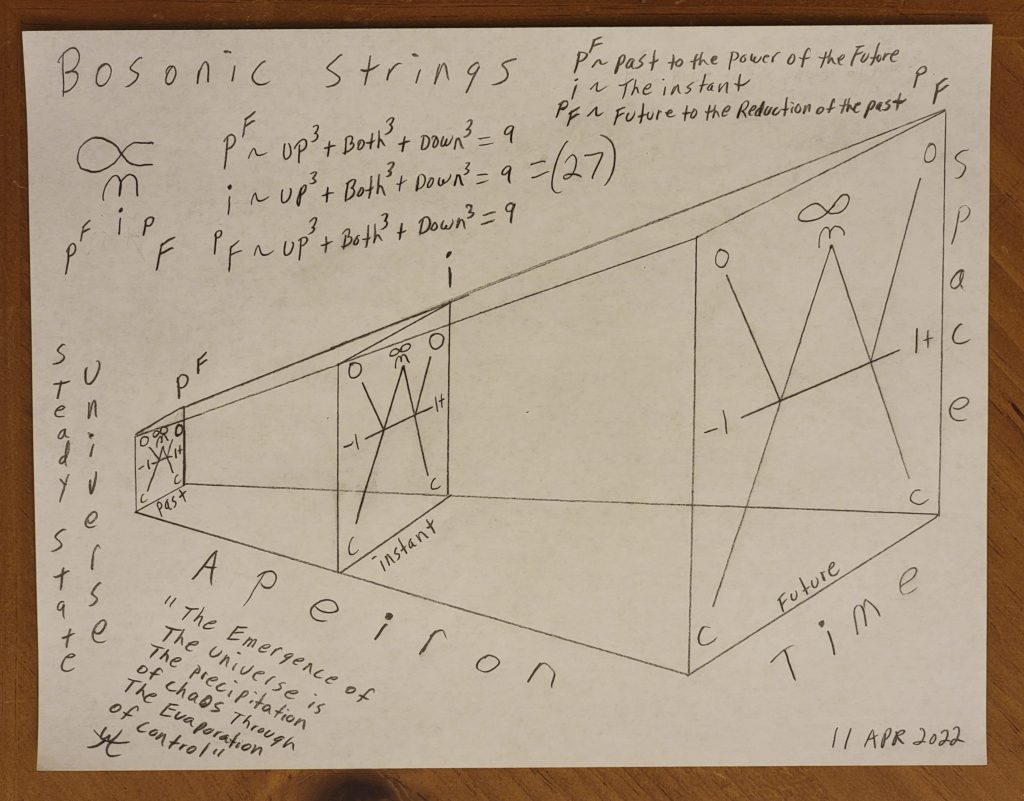From:
David Lynch <dnl1960 at yahoo.com>
To: Richard Lieu <richard.lieu at uah.edu>
Cc: Fred Partus <fpartus at yahoo.com>; Bob Harbort <bharbort at
earnshaw.us>; Lawrence Silverberg <lmsilver at ncsu.edu>; Stephen
J. Crothers <sjcrothers at plasmaresources.com>; Bruce *HS Greyson
<cbg4d at uvahealth.org>
Sent: Thursday, November 14, 2024 at 02:03:25 PM EST
Subject: The KnoWellian Universe Theory and its Potential Relevance to
Massless Topological Defects
Dear Dr. Lieu,
I am writing to you with great interest in your paper, "The binding of cosmological structures by massless
topological defects," specifically your exploration of alternative
gravitational sources that might explain the observed dynamics of galaxies
and galaxy clusters without invoking dark matter. I've been developing a
cosmological framework, the KnoWellian Universe Theory, which I believe
shares some intriguing conceptual parallels with your work, particularly
regarding the interplay of opposing forces and the nature of space and
time.
The KnoWellian Universe Theory proposes a universe not governed solely by
expansion, but by a dynamic interplay of emergence and collapse, a
"bidirectional" cosmology. I introduce two fundamental concepts: the
Ultimaton, a source of emerging positive mass particles, and the
Entropium, a sink into which wave energy collapses carrying negative mass.
This continuous emergence and collapse, occurring at all scales, creates
the fabric of spacetime and drives the observed cosmic motions.
I see a potential connection between your massless topological defects and
the interplay between the Ultimaton and Entropium. Your defects, despite
being massless, generate a gravitational field due to their specific
density profile. Similarly, in my model, the continuous emergence of
particles from the Ultimaton and the collapse of waves into the Entropium,
though potentially balancing out in terms of net mass-energy, could create
dynamic gravitational effects. Could your mathematical framework for
topological defects be adapted to describe the interplay of these emergent
and collapsing entities?
The KnoWellian Universe also introduces a ternary conception of time:
past, present, and future, not merely as points on a linear timeline, but
as distinct dimensions. This "KnoWellian Ternary Time" could potentially
offer a new framework for understanding the evolution of your topological
defects and their influence on the surrounding spacetime. Could the
dynamic behavior of your defects be analyzed within a ternary time
framework, perhaps revealing new insights into their gravitational
effects?
Central to the KnoWellian Universe is the KnoWellian Axiom of mathematics:
"-c>∞<c+." This axiom represents the bidirectional flow of energy,
with '-c' symbolizing the emergence of particles at the speed of light
from the Ultimaton, 'c+' symbolizing the collapse of waves into the
Entropium at the speed of light, and '∞' representing the present moment,
the infinitely small point of interaction where the exchange occurs,
generating a residual heat analogous to the cosmic microwave background
radiation.
Your paper focuses on static solutions to Einstein's field equations.
Could the KnoWellian Axiom, with its emphasis on dynamic energy exchange,
provide a framework for exploring dynamic solutions involving your
topological defects? Could this dynamic interplay offer new explanations
for observed phenomena like galactic rotation curves or gravitational
lensing, perhaps complementing or even extending your current model?
The KnoWellian Universe is a "trivium" encompassing science, philosophy,
and theology. It acknowledges the limitations of our current scientific
understanding and embraces a broader perspective that includes
philosophical inquiry and theological interpretations. Your work, by
challenging conventional dark matter models, shares this spirit of
exploring unconventional ideas.
My theory is not meant to replace or contradict the mathematics of the Big
Bang; instead, I view the Big Bang as occurring in each instant where
pre-particles become particles and no longer have their pre-particle
properties, thereby creating new Space inside of the Ultimaton. It is
augmented by the waves collapsing back into the Entropium to become
pre-waves, thereby destroying Space outside of the Entropium.
I'd be honored to hear your thoughts on these potential connections
between the KnoWellian Universe Theory and your work on massless
topological defects. Do you see any avenues for integrating these concepts
or potential areas for further exploration? Your insights would be
invaluable as I continue to develop this framework.
Thank you for your time and consideration.
Sincerely,
David Noel Lynch
KnoWell
~3K
P.S.
This is the
KnoWell Equation.

This is how the KnoWell expresses the 27 dimensions of Bosonic strings
without folding infinity.

From: David Lynch
<dnl1960 at yahoo.com>
To: Richard Lieu <richard.lieu at uah.edu>
Cc: Fred Partus <fpartus at yahoo.com>; Bob Harbort <bharbort
at earnshaw.us>; Lawrence Silverberg <lmsilver at ncsu.edu>;
Stephen J. Crothers <sjcrothers at plasmaresources.com>; Bruce *HS
Greyson <cbg4d at uvahealth.org>
Sent: Thursday, November 14, 2024 at 03:27:35 PM EST
Subject: Google NotebookLM podcast regarding this letter to Dr. Richard
Lieu
Dr. Lieu,
Here is a link to a Google NotebookLM podcast regarding my letter to Dr. Richard Lieu
Below is the source material from which Google generated the Podcast.
The binding of cosmological structures by massless topological defects 2406.04355v1.pdf
Trivium
Autistic
Brainchild
Cantor
Lieu
Prophet
Shimmer
Link to a text transcript of the NotebookLM Podcast Letter_to_Richard_Lieu.txt



